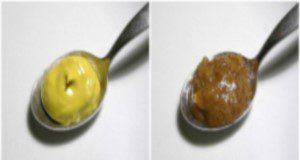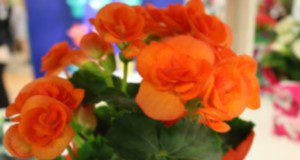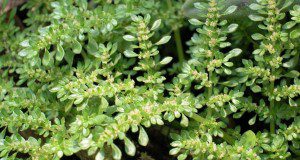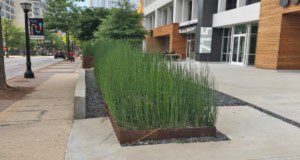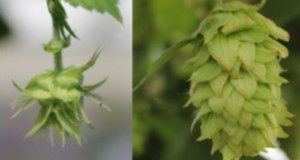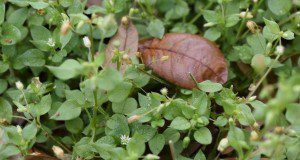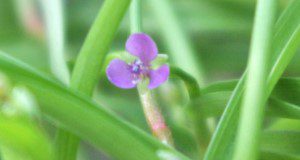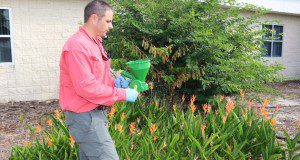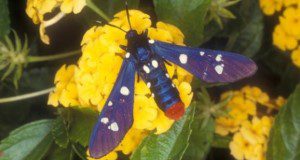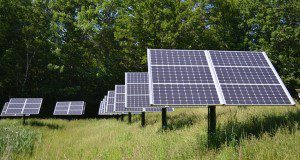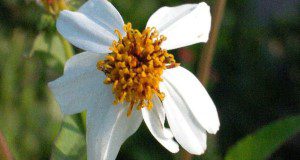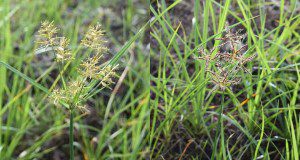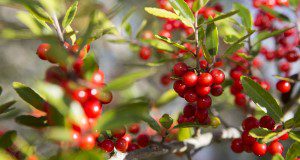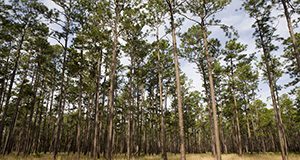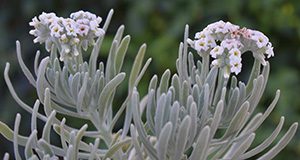Given the economic impact associated with the value and acceptability of horticultural crops, sensory evaluation is commonly employed in research, product development, and quality control, with very specific parameters outlined for its proper execution. The resulting data can be used to make sound decisions about crop quality and marketability, ultimately determining the overall value. This new 3-page publication of the UF/IFAS Environmental Horticulture Department is the first in a series designed to assist producers in the small-to-medium-scale sensory evaluation of their horticultural crops, outlining sensory attributes essential to sensory evaluation, including appearance, aroma, texture, and flavor. Written by Sean Michael Campbell and Charles A. Sims.
https://edis.ifas.ufl.edu/ep579
Tag: Environmental Horticulture Department
A Beginner's Guide to Begonias: Classification and Diversity
Begonias are known by their bright, full flowers and also their leaves, which vary to showcase patterns, designs or color. They are often used as hanging baskets, flowerpots, and garden beds, as well as in the landscape. This new 5-page publication of the UF/IFAS Environmental Horticulture Department is intended for Florida gardeners and horticulturalists hoping to learn more about the different classifications of begonias as well as those interested in learning more about this potential landscape or houseplant. Written by Julian Ginori, Heqiang Huo, and Caroline R. Warwick.
https://edis.ifas.ufl.edu/ep581
Use of Glyphosate and Herbicide Alternatives for Weed Control in Florida Landscape Planting Beds
This new 10-page article is written for landscape professionals and those maintaining landscape areas to guide them in selecting alternatives to glyphosate (the active ingredient in RoundUp®) for postemergence weed control in Florida. Information is also included on preemergence herbicides and integrated weed management (use of chemical and non-chemical controls), which should be the basis of a weed management program. Written by Chris Marble, Joe Neal, and Andy Senesac, and published by the UF/IFAS Environmental Horticulture Department.
https://edis.ifas.ufl.edu/ep580
Considerations for Selection and Use of Ornamental Grasses
Ornamental grasses create interest and excitement in the landscape with their unique characteristics. The availability of a large number of species and cultivars makes these plants very versatile, with many potential uses in the landscape. This publication outlines many of the considerations for the proper selection and use of ornamental grasses. The information and tables should assist the first-time gardener as well as the experienced landscaper in the selection and use of ornamental grasses in Florida. This 9-page major revision was written by Mack Thetford and Mary Salinas and published by the UF/IFAS Environmental Horticulture Department.
https://edis.ifas.ufl.edu/ep233
Harvest Techniques for Hops (Humulus lupulus)
Hops (Humulus lupulus) are perennial plants commonly harvested for their mature strobiles, also referred to as cones, which are primarily dried and used as a bittering agent and preservative in beer production. The two primary factors of harvest timing and harvest method can have large impacts on the quality and economics of the finished product. The decision of when and how to harvest is important and should rely upon growing-region-specific environmental conditions, physical observations of the cones, and the wants and needs of the individual producer. This new 4-page publication of the UF/IFAS Environmental Horticulture Department describes the primary methods used in hop harvesting, including field, indoor, and machine harvesting. Written by Sean Michael Campbell and Brian J. Pearson.
https://edis.ifas.ufl.edu/ep578
Biology and Management of Common Chickweed (Stellaria media) in Ornamental Crop Production
Chickweed is a common cool-season annual weed in Florida landscapes, container nurseries, home gardens, and other agricultural production systems. This new 5-page article is written for green industry professionals and others to aid in the identification and management of chickweed in and around ornamental plants. Written by Yuvraj Khamare, Chris Marble, Nathan Boyd, and Shawn Steed and published by the UF/IFAS Environmental Horticulture Department.
https://edis.ifas.ufl.edu/ep577
Biology and Management of Doveweed (Murdannia nudiflora) in Ornamental Crop Production
Doveweed is a common warm-season annual weed in Florida landscapes, container nurseries, and other agricultural production systems. This new 5-page article is written for green industry professionals and others to aid in the identification and management of doveweed in and around ornamental plants. Preemergence and postemergence herbicides are covered, as well as basic information on doveweed biology and growth. Written by Yuvraj Khamare, Chris Marble, Nathan Boyd, and Shawn Steed, and published by the UF/IFAS Environmental Horticulture Department.
https://edis.ifas.ufl.edu/ep576
Florida Homeowner Herbicide Guide: Considerations, Applications, and Selection
While some people opt for professional lawn maintenance companies, some homeowners may wish to perform their own landscape pest control in order to save money, to have more control of what is applied, or simply because they enjoy it. This EDIS publication is for Florida gardeners, horticulturalists and homeowners who want to utilize herbicides to control weeds in their landscape. This new 9-page publication of the UF/IFAS Environmental Horticulture Department discusses common herbicides available at retail stores and how homeowners can use these them safely and effectively. Written by Chris Marble.
https://edis.ifas.ufl.edu/ep575
Key Plant, Key Pests: Oleander (Nerium oleander)
This series of Key Plant, Key Pests publications are designed for Florida gardeners, horticulturalists, and landscape professionals to help identify common pests associated with common Florida flora. This new 5-page publication, the tenth in the series, helps identify the most common pests found on oleander. This publication provides information and general management recommendations for oleander aphids, oleander caterpillars, sphaerosis gall, oleander leaf scorch, and scale. Written by Juanita Popenoe, Jacqueline Bourdon, Caroline R. Warwick, and Jianjun Chen, and published by the UF/IFAS Environmental Horticulture Department.
https://edis.ifas.ufl.edu/ep574
Butterfly Pea (Clitoria ternatea) Flower Extract (BPFE) and Its Use as a pH-Dependent Natural Colorant
Butterfly pea (Clitoria ternatea), a twining vine native to Southeast Asia, produces deep blue to purple flowers that bloom nearly year-round in ideal conditions. When extracted in a liquid, the addition of a mild acid such as lemon or lime juice turns the naturally deep blue to purple color into a much lighter pink or purple color, giving the extract its color-changing ability. This new 5-page publication of the UF/IFAS Environmental Horticulture Department outlines the use of butterfly pea flower extract (BPFE) as a pH-dependent natural colorant, including an explanation of the science behind the color change, detailed parameters for flower extraction, instructions for storage and processing of the extract as well as a discussion of some of the other benefits of using BPFE. Written by Sean Michael Campbell and Brian Pearson.
http://edis.ifas.ufl.edu/ep573
Key Plant, Key Pests: Juniper (Juniperus spp.)
This series of Key Plant, Key Pests publications is designed for Florida gardeners, horticulturalists, and landscape professionals to help identify common pests associated with common Florida flora. This seven-page publication, the ninth in the Key Plant, Key Pests series, helps identify the most common pests found on Juniper, with information and general management recommendations for bagworms, eriophyid mites, scale, spider mites, webworm, mushroom root rot, needle blight, Rhizoctonia web blight, tip blight, and wet root rot diseases. Written by Juanita Popenoe, Jacqueline Bourdon, Caroline R. Warwick, and Alfred Huo and published by the UF/IFAS Environmental Horticulture Department.
http://edis.ifas.ufl.edu/ep570
Green Power in the Garden: A Simple Water Feature Using Photovoltaic Solar Panels
In this new 4-page publication from the Environmental Horticulture Department, Edmund Lee Thralls presents a basic method of how to construct a solar-powered water feature in your garden.
http://edis.ifas.ufl.edu/ep571
Biology and Management of Spanish Needles (Bidens spp.) in Ornamental Crop Production
All eight species of Bidens in Florida are commonly referred to as Spanish needles or beggar-ticks. This document focuses on Bidens alba and B. pilosa, which are common weeds in container nurseries and landscapes in Florida. This 6-page EDIS publication, written by Yuvraj Khamare, Chris Marble, Shawn Steed, and Nathan Boyd and published by the UF/IFAS Environmental Horticulture Department, is designed for landowners, gardeners, horticulturalists, and consumers hoping to learn more about Spanish needle classification and management.
http://edis.ifas.ufl.edu/ep572
Biology and Management of Yellow (Cyperus escuelentus) and Purple Nutsedge (C. rotundus) in Ornamental Crop Production and Landscapes
This new six-page document provides insight on characteristics and management techniques for both yellow and purple nutsedge, prevalent and persistent weeds in Florida. Written by Debalina Saha, Chris Marble, Nathan Boyd, and Shawn Steed and published by the UF/IFAS Environmental Horticulture Department, March 2019.
http://edis.ifas.ufl.edu/ep569
Key Plant, Key Pests: Holly (Ilex sp.)
This series of Key Plant, Key Pests publications are designed for Florida gardeners, horticulturalists, and landscape professionals to help identify common pests associated with common Florida flora. This publication, the eighth in the Key Plant, Key Pests series, helps identify the most common pests found on Holly (Ilex sp.). This publication provides information and general management recommendations for Florida wax scale, tea scale, Cylindrocladium leaf spot, dieback, Sphaeropsis gall, root knot nematodes, and magnesium deficiency. This five-page document was written by Juanita Popenoe, Caroline R. Warwick, Jacqueline Bourdon, and Liz Felter and published by the UF/IFAS Department of Environmental Horticulture.
http://edis.ifas.ufl.edu/ep566
Process of Drying Post-Harvest Hops (Humulus lupulus) for Small-Scale Producers Using a Novel Drying Rig
Fresh horticultural goods often require drying post-harvest to preserve quality and allow for successful long-term storage of plant material. Given the influx of hops cultivation in the state of Florida, this 5-page publication will help Florida hops growers and hobby brewers to understand how to efficiently dry hops prior to storage. Written by Sean Campbell and Brian Pearson and published by the UF/IFAS Environmental Horticulture Department, January 2019.
http://edis.ifas.ufl.edu/ep568
Key Plant, Key Pests: Azalea (Rhododendron spp.)
This 8-page document is one in the Key Plant, Key Pests series. It helps identify the most common pests found on azalea. Written by Juanita Popenoe, Caroline R. Warwick, Jacqueline Bourdon, and David J. Norman and published by the UF/IFAS Environmental Horticulture Department, December 2018.
http://edis.ifas.ufl.edu/ep567
Key Plant, Key Pests: Pine Species (Pinus sp.)
This 6-page document is one in the Key Plant, Key Pests series. It helps identify the most common pests found on pine species. Written by Juanita Popenoe, Jacqueline Bourdon, Caroline R. Warwick, and Chris Marble and published by the UF/IFAS Environmental Horticulture Department, December 2018.
http://edis.ifas.ufl.edu/ep565
Florida Medicinal Garden Plants: Skullcap (Scutellaria spp.)
Scutellaria species (spp.) are perennial, herbaceous plants that are cultivated for both their ornamental and medicinal value. This 5-page document describes the uses and growing requirements of this species. Written by Amanda Morgan and Brian Pearson and published by the UF/IFAS Environmental Horticulture Department, September 2018.
http://edis.ifas.ufl.edu/ep564
Sea Lavender (Heliotropium gnaphalodes L.): Identification and Uses
Sea lavender is a native plant found naturally along the Atlantic coast of central and south Florida. This 7-page document discusses this species’ identification and uses. Written by Stephen H. Brown, Marc S. Frank, and Andrew K. Koeser and published by the UF/IFAS Environmental Horticulture Department, August 2018.
http://edis.ifas.ufl.edu/ep563
